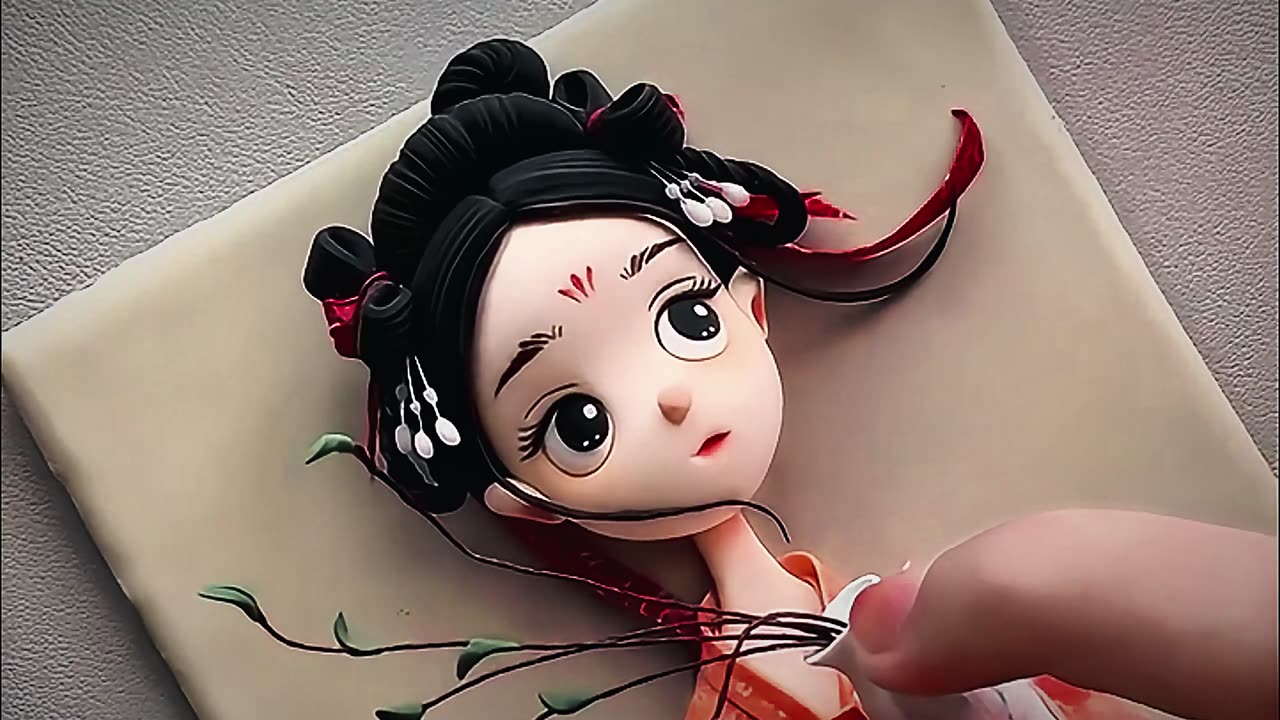Premium Only Content

Mud men figurin
Chinese clay sculpture, rooted deeply in the soil of traditional Chinese culture, is a form of folk art that uses clay as its raw material. Through the skillful pinching and painting by artists, it creates figures of various shapes and rich colors, including humans, animals, or other objects. This art form has a long history in China and has continued to evolve over time.
Historical Origins
The history of Chinese clay sculpture dates back to the Neolithic Age, with the earliest works being small figurines of people and animals found at some ancient cultural sites. By the Han Dynasty, with the spread of Buddhist culture, clay sculpture began to be widely used in temples for Sculpting Buddha Statues and characters from religious stories. During the Tang and Song dynasties, clay sculpture art reached its peak, with the emergence of many famous works and schools, such as the "Clay Figure Zhang" in Tianjin and the Huishan clay figures in Wuxi.
Technical Features
The uniqueness of Chinese clay sculpture lies in its hand-pinching technique. Artists usually use specially prepared fine clay, which after repeated kneading and shaping, forms the basic outline. The artist's experience and skills are crucial in this process. After shaping, the sculpture needs to be carefully polished and dried, and finally painted. Painting is another important technique in clay sculpture art, requiring artists to have superb painting skills and a deep understanding and application of color.
Cultural Significance
Clay sculpture is more than just an artistic expression; it also carries rich cultural connotations and folk values. In traditional festival activities, clay sculptures often appear as children's toys or household decorations, embodying people's aspirations and blessings for a good life. In addition, clay sculpture works often reflect the observations and imaginations of folk artists about life, as well as the aesthetic interests and cultural pursuits of the people.
Modern Development
In modern society, despite advanced technology, traditional clay sculpture still maintains its artistic charm and cultural value. Many clay sculptors continue to innovate on the basis of inheriting traditional techniques, making clay sculpture art more diverse and international. At the same time, clay sculpture has become an important bridge connecting the past and the present, and communicating Chinese and foreign cultures.
In summary, Chinese clay sculpture, with its unique national style, rich cultural connotations, and exquisite handicraft art, has not only become an important part of Chinese folk art but also a precious treasure of world cultural heritage.
-
 15:00
15:00
Mrgunsngear
14 hours ago $3.43 earnedDan Wesson DWX: 2011 & CZ-75's Baby
19.5K14 -
 16:07
16:07
SKAP ATTACK
13 hours ago $1.57 earnedNuggets STEAL Game 1 Behind Jokic Mastery
17.6K6 -
 LIVE
LIVE
Big Fitz Plays
1 hour agoWho Gave Me a Chainsword?! | Space Marine 2 Chaos Stream
89 watching -
 22:16
22:16
marcushouse
15 hours ago $2.57 earnedFinally, the Starship Info We’ve Been Waiting For… And What We Can Do With It Is Wild!
12.7K14 -
 33:32
33:32
Ohio State Football and Recruiting at Buckeye Huddle
13 hours agoOhio State Football: What Position is the Biggest Question Mark for the Buckeyes?
12.1K2 -
 LIVE
LIVE
JahBlessGames
58 minutes agoEASTER STREAM TEST
76 watching -
 9:30
9:30
VSOGunChannel
18 hours ago $1.15 earnedAdmin Actually Defending the 2nd Amendment?
11.4K10 -
 LIVE
LIVE
Biscotti-B23
3 hours ago🔴 LIVE REMATCH TOURNAMENT W/ DOTODOYA ⚽ OTSUTSUKI FC VS YOUTUBE ALLSTARS
48 watching -
 44:55
44:55
BEK TV
12 hours agoTARIFFS, TECH TYRANNY, AND PROPHECY: CLAY CLARK EXPOSES THE GLOBAL RESET NO ONE IS TALKING ABOUT
11.7K3 -
 56:09
56:09
TheCommonSenseShow
5 days agoA NEW CONSERVIATIVE MEDIA WILL SOON BE THE LARGEST OUTLET IN THE WORLD
12.8K6